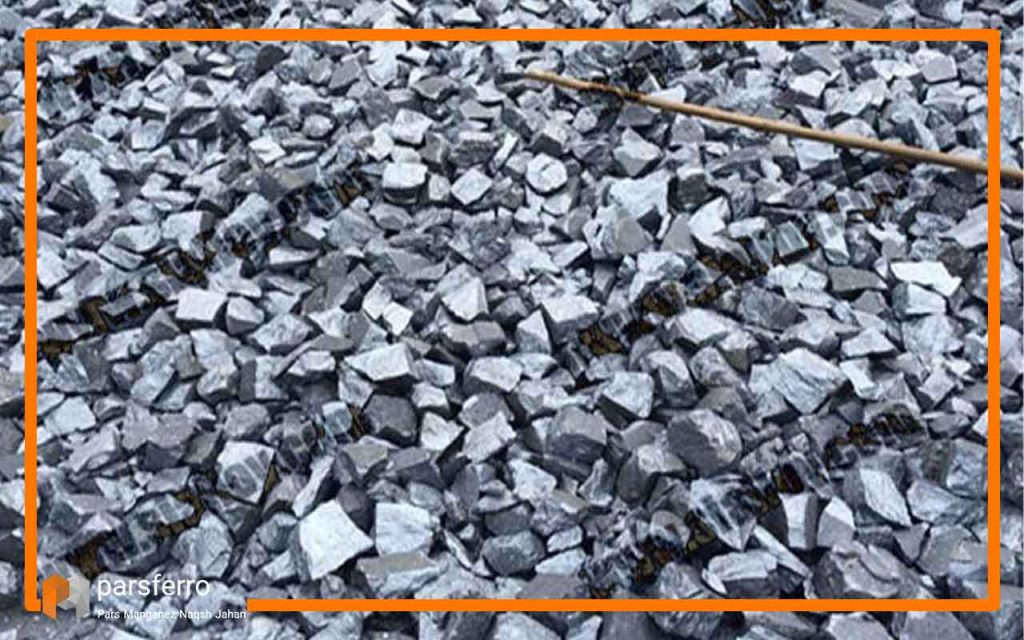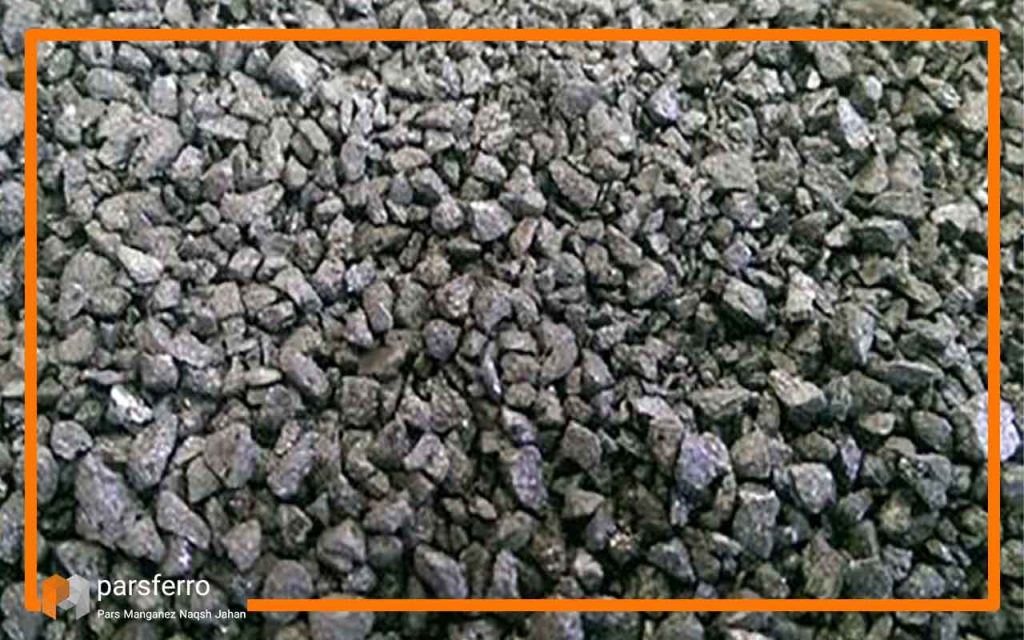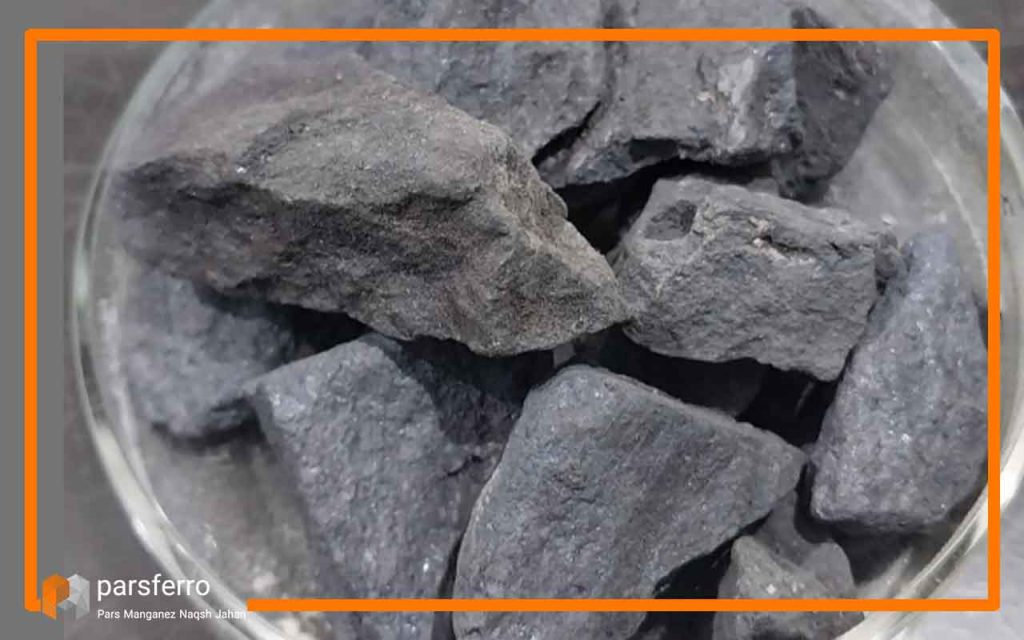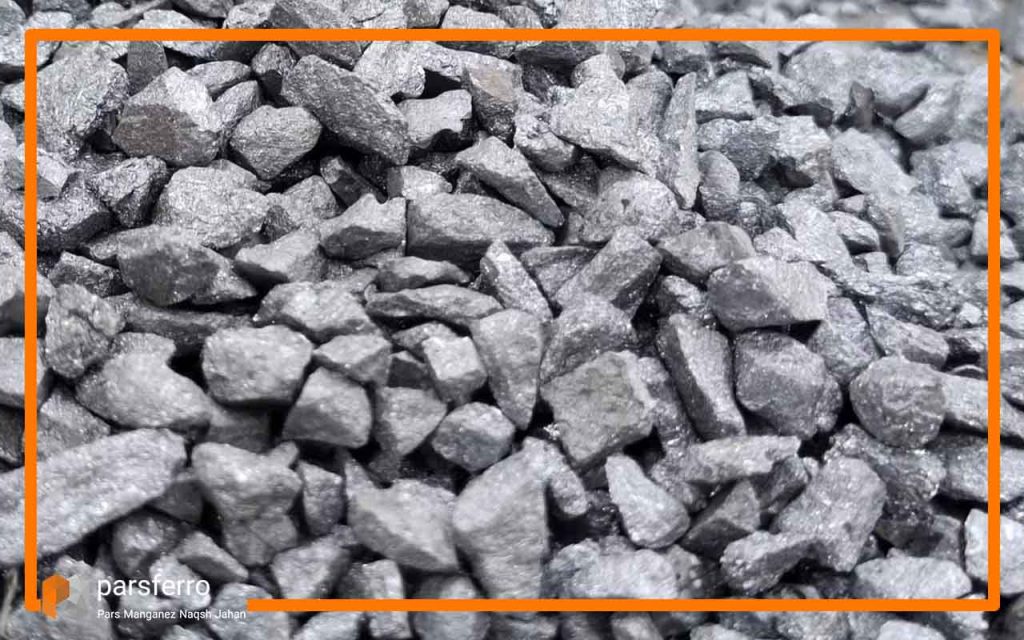ferro silicon magnesium manufacturing process involves the production of an alloy that contains iron (Fe), silicon (Si), and magnesium (Mg). industry commonly uses this alloy as an inoculant in producing ductile iron, a type of cast iron renowned for its high strength and ductility. The addition of ferr osilicon magnesium to molten iron promotes the formation of nodular graphite, improving the mechanical properties of the final product. In this article, we introduced you to the steps of the ferro silicon magnesium manufacturing process.
Pars Manganez Naqsh Jahan Company proudly declares its commitment as one of the leading companies in the production of alloys to supply high-quality raw materials with minimal impurities for the global steel industry. Leveraging innovative technologies and outstanding technical capabilities, the company is ready to produce alloys with precise compositions tailored to the industrial needs of its audience. At Pars Manganese, we strive for continuous improvement and enhancement of product quality, providing appropriate services, and advancing collaboration with the global steel industry. For more information please contact us via email.
ferro silicon magnesium manufacturing process step-by-step
Here is a general overview of ferro silicon magnesium manufacturing process :
Raw Materials
ferro silicon magnesium manufacturing process begins with the collection of raw materials. Silica, sourced from quartz, is refined to high purity. Ferrosilicon, a combination of iron and silicon, is produced by smelting a mixture of silica and iron in an electric arc furnace. Magnesium, usually obtained from magnesium oxide or magnesium chloride, is combined with ferrosilicon to create magnesium ferrosilicon. In summary, raw material for ferrosilicon magnesium includes:
- Silica (SiO2): The source of silicon.
- Ferrosilicon (FeSi): A ferroalloy composed of iron and silicon.
- Magnesium (Mg): Typically in the form of magnesium ferrosilicon (MgFeSi).
- Other Additives: Depending on the specific requirements of the casting process, other elements or alloys may be included.
Preparation of Raw Materials
The refined silica, ferrosilicon, and magnesium ferrosilicon are prepared in appropriate proportions. This involves carefully measuring and mixing the raw materials to achieve the desired composition for the final alloy.

Smelting
The mixed raw materials are fed into a smelting furnace, commonly an electric arc furnace, where they are subjected to high temperatures. This induces chemical reactions leading to the reduction of silica, iron, and magnesium, resulting in the formation of ferrosilicon magnesium alloy.
Silicon Reduction Process in ferro silicon magnesium manufacturing process
The primary raw material for silicon production is usually quartz (SiO2). The reduction of quartz to silicon involves the following steps:
Carbothermal Reduction: Quartz is mixed with carbon (usually in the form of coke), and the mixture is heated in an electric arc furnace. The reaction is:
SiO2 +2C→Si+2CO
The silicon produced is often further refined to achieve the desired purity.
Magnesium Reduction Process in ferro silicon magnesium manufacturing process
Magnesium is typically produced through processes like the Pidgeon process, which involves the reduction of magnesium oxide using ferrosilicon. The reaction is:
MgO+Si→Mg+SiO
The magnesium produced may undergo further refining to achieve the required

Refining
The molten alloy undergoes a refining process to eliminate impurities and enhance its quality. Various treatments, such as desulfurization and degassing, may be applied to achieve the desired alloy characteristics.
Casting
The refined and molten ferrosilicon magnesium alloy is cast into the desired shapes, typically in the form of ingots or granules. This step determines the physical form of the final product.
Cooling and Solidification
The cast alloy is left to cool and solidify, allowing it to take on its final form. Controlled cooling is essential for achieving the desired microstructure and properties of the alloy.
Crushing and Sizing
The solidified alloy is processed further by crushing it into smaller pieces or grinding it into granules of the desired size. This step facilitates handling and ensures uniformity in the alloy’s physical characteristics.

Packaging and shipping
The final ferrosilicon magnesium product is packaged and prepared for shipping to industries involved in the production of ductile iron. The alloy, with its controlled composition, is a crucial additive in enhancing the mechanical properties of cast iron, particularly its strength and ductility.
Quality Control is the most important step in ferro silicon magnesium manufacturing process
Quality control is indeed a critical step in of ferro silicon magnesium manufacturing process. Ensuring the quality of the final product is essential for meeting industry standards and customer requirements. Here are several reasons why quality control is crucial in the manufacturing of ferrosilicon magnesium:
- Material Consistency: Quality control measures help maintain consistency in the composition of the alloy. Variations in raw materials can lead to differences in the final product, affecting its mechanical and chemical properties. Consistency is crucial for meeting specific industry standards and customer expectations.
- Mechanical Properties: The mechanical properties of ferrosilicon magnesium, such as tensile strength and hardness, are crucial for its intended applications. Quality control ensures that the alloy meets the specified mechanical requirements, making it suitable for use in the production of high-quality ductile iron.
- Chemical Composition: The chemical composition of the alloy is carefully monitored during the manufacturing process. Quality control checks help ensure that the alloy contains the right proportions of silicon, magnesium, and other alloying elements. Deviations from the desired composition can lead to substandard products.

- Inclusion Control: Quality control measures help identify and control the presence of undesirable inclusions in the alloy. Inclusions can negatively impact the mechanical properties of the final product and lead to defects. Controlling and minimizing inclusions is crucial for producing high-quality ferrosilicon magnesium.
- Uniform Heat Treatment: Heat treatment is often a critical step in the manufacturing process of ferrosilicon magnesium. Quality control ensures that the heat treatment process is uniform, resulting in consistent microstructure and properties throughout the alloy.
- Meeting Industry Standards: Various industries have specific standards and specifications for ferrosilicon magnesium alloys. Quality control ensures that the final product meets these standards, allowing manufacturers to comply with regulatory requirements and customer expectations.
- Cost Efficiency: Implementing quality control measures helps identify and rectify issues early in the manufacturing process. This can prevent the production of defective batches, reducing waste and improving overall cost efficiency.
Conclusion
In conclusion, the Ferro silicon Magnesium manufacturing process is a meticulous series of steps crucial for producing an alloy that significantly enhances the mechanical properties of ductile iron. Pars Manganez Naqsh Jahan Company, a prominent player in the industry, underscores its commitment to providing high-quality alloys with minimal impurities. The process encompasses sourcing and refining raw materials, precise preparation, smelting in electric arc furnaces, reduction processes for silicon and magnesium, refining for purity, casting, controlled cooling, and final processing steps like crushing and sizing. Quality control measures are rigorously applied at every step to meet industry specifications and standards. It is important to note that variations may occur based on specific requirements and considerations related to equipment, composition, and production scale. Safety and environmental factors are integral components of this manufacturing process, underscoring the industry’s commitment to responsible production


No comment